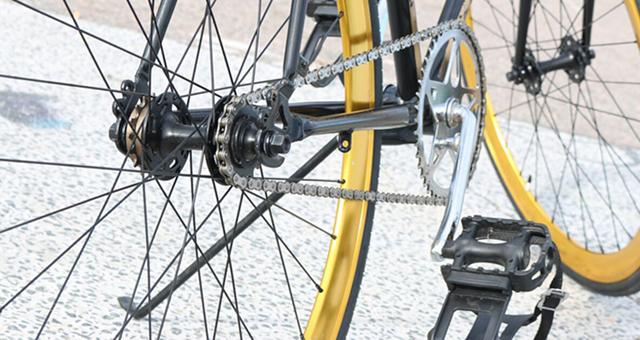Sir Isaac Newton was an English scientist. He was born in 1642 and died in 1727. This was around the time of the early colonization of North America. He lived just before the American Revolution. Newton is best known for three important principles of physics that describe how things move. Consequently, the principles are referred to today by his name – Newton’s First, Second and Third Law of Motion. Newton’s Second Law of Motion says that acceleration (gaining speed) happens when a force acts on a mass (object).
Riding your bicycle is a good example of this law of motion at work. Your bicycle is the mass. Your leg muscles pushing pushing on the pedals of your bicycle is the force. When you push on the pedals, your bicycle accelerates. You are increasing the speed of the bicycle by applying force to the pedals.
Newton’s Second Law also says that the greater the mass of the object being accelerated, the greater the amount of force needed to accelerate the object. Say you have two identical bicycles that each have a basket. One bicycle has an empty basket. One bicycle has a basket full of bricks. If you try to ride each bicycle and you push on the pedals with the exact same strength, you will be able to accelerate the bike with the empty basket MORE than the bike with the basket full of bricks. The bricks add mass to the second bicycle. With bricks in the basket, you would have to apply more force to the pedals to make the bicycle with bricks in the basket move.
Experiments:
- Perkins School for the Blind: Newton’s Second Law of Motion
- Sciencing: Second Law of Motion Experiments
- 4-H: Newton’s Speedway: Acceleration, Mass, and Force
Websites, Activities & Printables:
- Scholastic StudyJams: Newton’s Second law of Motion
- NASA Classroom Connections: Newton’s Second Law of Motion
- NASA: Newton’s Second Law of Motion
- Printable: NASA STEMonstrations Newton’s Second Law
- Khan Academy: What Is Newton’s Second Law?
- IndyPL Blog: Newton’s First Law of Motion
- IndyPL Blog: Newton’s Third Law of Motion

You can ask a math and science expert for homework help by calling the Ask Rose Homework Hotline. They provide FREE math and science homework help to Indiana students in grades 6-12.
e-Books and Audiobooks
Use your indyPL Library Card to check out books about Sir Isaac Newton at any of our locations, or check out Sir Isaac Newton e-books and audiobooks from OverDrive Kids right to your device! If you have never used OverDrive before, you can learn how to use it for both e-books and audiobooks.
Need more help? Ask a Library staff member at any of our locations or call, text or email Ask-a-Librarian. Additionally, the Tinker Station helpline at (317) 275-4500 is also available. It is staffed by device experts who can answer questions about how to read, watch and listen on a PC, tablet or phone.
Newton’s Laws of Motion: The Science Behind How Things Move
Newton’s Laws of Motion explain force and motion, or why things move the way they do. They are great concepts to explore by doing a science experiment. These are especially good science project ideas for kids who like to move! The concepts can often be explained using sports equipment or by understanding how amusement park rides work. These books offer ideas for physics experiments that demonstrate force and motion and the laws that govern them. Some of them provide the background information needed for the report that is often required to go with projects for the science fair.
